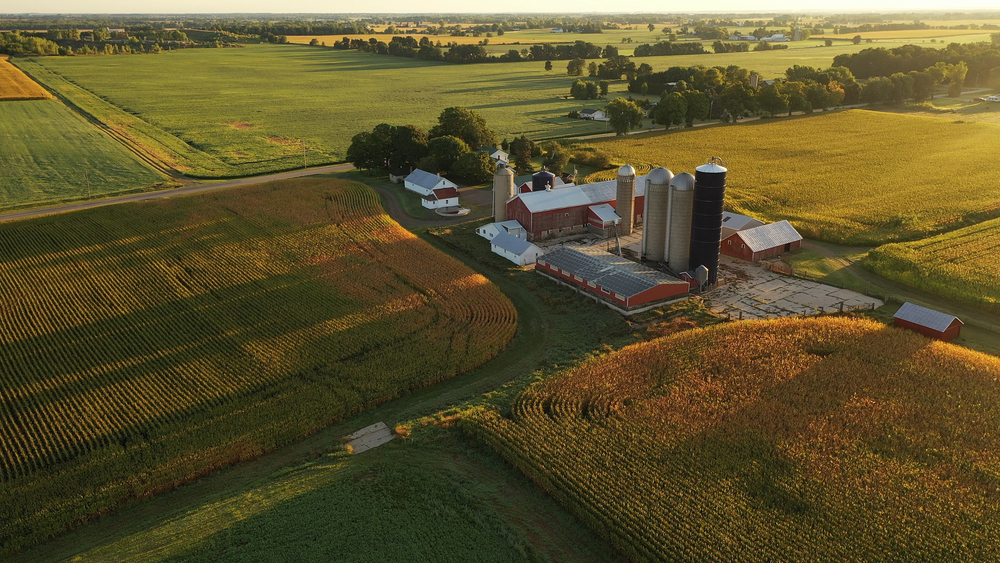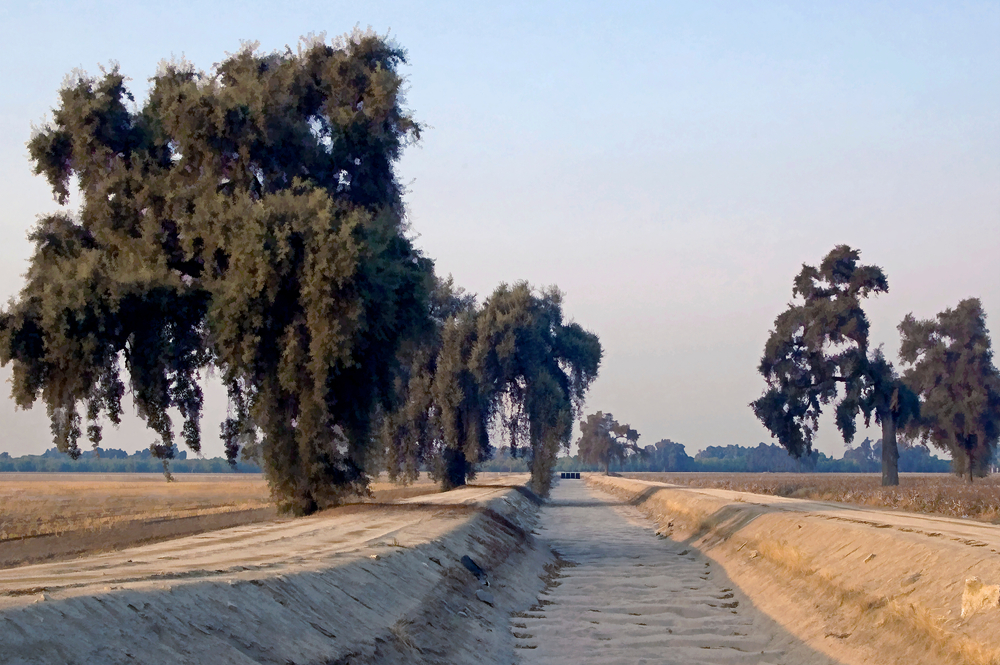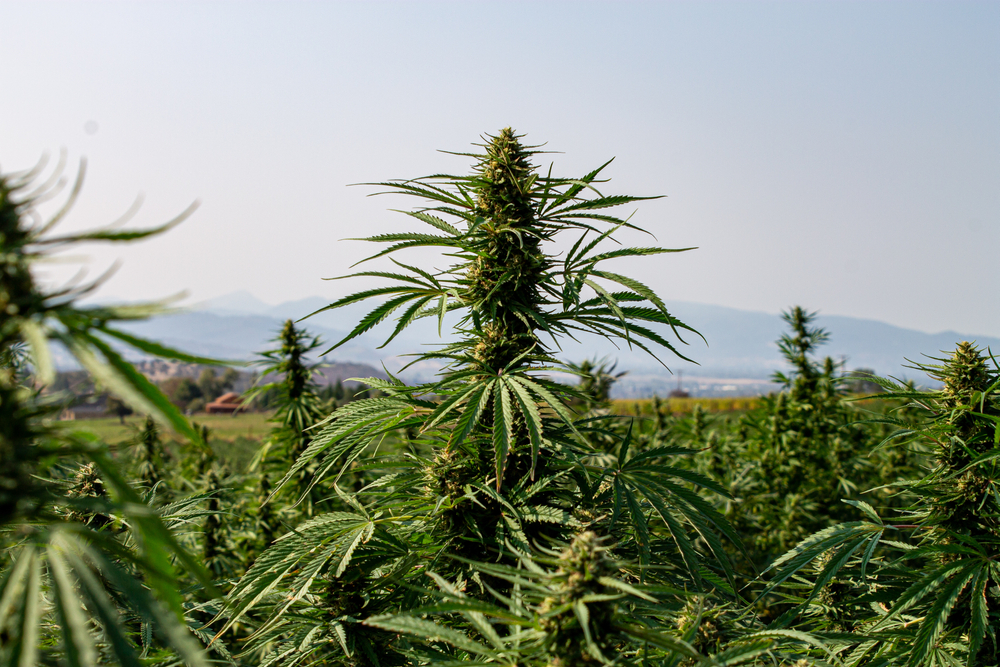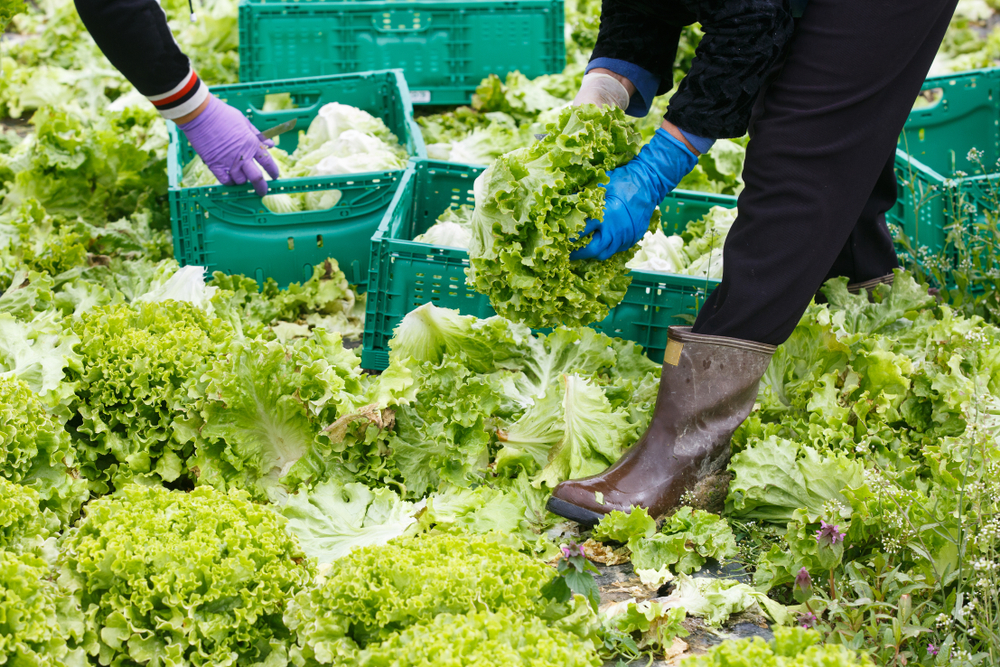What Farmers Really Want From the 2023 Farm Bill
We dig into what groups across the country are asking for.
What Farmers Really Want From the 2023 Farm Bill
We dig into what groups across the country are asking for.

Discussions around the 2023 Farm Bill are ramping up.by Alena Mozhjer, Shutterstock.
One of the most important pieces of legislation for farmers and ranchers across the US is the Farm Bill, an omnibus document that covers a wide range of programs—from food access to training and education for growers. The previous farm bill, signed into law in 2018, expires next year. As such, a new bill will have to be enacted in 2023. But before President Biden can sign off, various components of the bill—and all of its moving parts—will be proposed, debated and fine-tuned by Congress.
Because this legislation is so important to food producers, many groups—including industry stakeholders, unions and state departments—rally for what they want to see included or changed in the bill. Some of those discussions are ongoing. For instance, the National Association of State Departments of Agriculture (NASDA) will host its annual general meeting at the end of this month, where the Farm Bill is sure to be a key discussion point. However, many groups are clear on their priorities, and they’re hoping to persuade Congress to see it their way.
Modern Farmer reached out to more than two dozen state departments of agriculture, grower associations, industry groups and unions to see what each wanted from the upcoming Farm Bill. Here’s what they say is most important.

Make Insurance More Accessible
Crop and farm insurance is a big point for many groups, specifically increasing coverage and ensuring producers are able to access relevant insurance more broadly. Florida Agriculture Commissioner Nikki Fried noted in her response that farmers have had to remain resilient through economic uncertainty, extreme weather conditions and supply issues exacerbated by the COVID-19 pandemic. As such, she would like to see a strengthening of the domestic food system, in part by including more “direct support for our farmers, especially Black farmers and others in historically underserved communities, who are seeing skyrocketing input costs; better crop insurance offerings and disaster response, particularly for specialty crops and our dairy industry.” Fried’s counterparts in Kansas and Nebraska echoed similar thoughts, with Steve Wellman, director of Nebraska’s department of agriculture, noting that federal crop insurance is used on more than 90 percent of Nebraska’s field crops.
Groups such as the National Farmers’ Union (NFU) would like to see crop insurance used in a way that can incentivize farmers. It is hoping Congress will consider offering crop insurance discounts to farmers who plant cover crops or use other methods of decreasing their own risk. Advocacy groups such as Regenerate America agree, asking that Congress might offer lower rates, loan deferments or flexible terms on their insurance to help farmers fast-track their transition to regenerative farming practices without leaving gaps in their coverage.
For some grower associations, crop insurance is especially important. The National Association of Wheat Growers (NAWG) mentioned that the cost of crop insurance has risen dramatically in the last decade, with an average hike of 49 percent. That’s not sustainable for the growers producing nearly 37 million acres of the country’s wheat. “As margins continue to shrink in light on inflation,” NAWG’s responded, “it is becoming increasingly punitive to purchase high enough levels of crop insurance to provide an adequate safety net.”

Center Climate Action
Many agencies agreed that prioritizing climate initiatives in the next farm bill is crucial. The difference is in how aggressive and wide-reaching each organization thinks those initiatives should be.
The National Latino Farmers and Ranchers Trade Association was just one of nearly 200 organizations that submitted an open letter to President Biden, detailing requests for the upcoming bill. Chief among them is to see this bill as a crucial piece of climate change legislation. “We will not avoid the worst effects of climate change unless this nation reduces heat trapping emissions, including from agriculture,” the letter reads. It goes on to ask for research and incentives to help farmers and ranchers reduce emissions, as well as help implementing “farming practices and labor policies that make their farms and workers better able to withstand extreme weather.”
Other organizations have taken a milder tone, including NASDA. The organization has said it supports increasing funding to the Agricultural Conservation Easement Program, which attempts to preserve certain tracts of land for agricultural or grazing uses. It also supports incentive programs for farmers to implement on-site practices to reduce greenhouse gas emissions and increase carbon sequestration, but it stresses that those practices should be voluntary. NASDA also asks for compensation for producers who already use climate-smart strategies. Grower organizations, including the American Soybean Association, ask that funding be focused and directed to programs that address cropland soil and water quality, as well as working land programs over land retirement programs. For that reason, they prioritize the Environmental Quality Incentives Program over the Conservation Stewardship Program as funding recipient.
Wyoming is one state clearly focused on conservation efforts. Doug Miyamoto, director of the state’s department of agriculture, says that conservation is a priority as long as it’s balanced with production. “Implementation of conservation practices must also increase the economic viability of the operations in the face of rising demand for food and exponential increases in input costs,” says Miyamoto, who also stresses that the farm bill should separate one-off funding opportunities from ongoing funding of conservation programs. “Supplemental funding is welcome, but replacing program funding through legislation outside the Farm Bill is concerning.”

Help Hemp Thrive
The 2018 Farm Bill officially removed hemp from the Schedule 1 controlled substances list, allowing it to become an agricultural product like any other. But producers say hemp still isn’t treated like other crops, and they want the constraints around hemp to be revisited.
For Florida’s Nikki Fried, the first order of business should be to lift the “arbitrary 0.3 percent THC threshold,” which requires that any hemp harvested should have less than 0.3 percent THC (the main psychoactive compound in marijuana). However, producers say there’s no evidence that 0.3 percent THC is the dividing line between psychoactive and non-psychoactive properties, and it can be a tough bar to clear. If a section of harvested hemp is found to have more than 0.3 percent THC, the whole crop may be destroyed, resulting in lost income and time for growers.
In addition, there are barriers when it comes to who can produce hemp. The National Cannabis Industry Association’s hemp committee is asking that this bill remove the ban that prevents convicted felons from owning or participating in state or federal hemp licensing programs. “The current blanket prohibition against individuals with felony convictions from owning or managing hemp business punishes many entrepreneurs who have been model citizens for decades, while doing little to promote public safety,” they say. The group is also asking to ease the testing requirements for industrial hemp, which is often used as fuel or seed and not for human consumption. Lastly, the hemp committee would like to see a federal lending program to support disadvantaged hemp farmers.

Securing Our Food Systems
Food safety, both in terms of access and disease prevention, was high on the list for many organizations. According to Regenerate America, the bill should address the imbalance between large national producers and smaller, local retailers. “By shifting purchasing power to within regional, regenerative systems, nutrition programs can increase access to fresh, healthy, grown-in-America food,” it states. The group notes that the Nutrition Title receives the majority of the Farm Bill funding and, therefore, should be a crucial focus for Congress.
The open letter sent to President Biden goes even further, calling on the president to end hunger nationwide. “The next Farm Bill must protect and strengthen food assistance programs to ensure sufficient resources, merit staffing, and access to nutritious food for all people who struggle against hunger and food insecurity as a result of wealth and income inequities often driven by systemic racism.” Along the same vein, NASDA is calling on Congress to include supply chain solutions that increase food equity for socially disadvantaged and BIPOC people. It also recommends that the 2023 Farm Bill increase the number of farmers’ markets and retailers that accept SNAP benefits as a way to provide consumers with greater access to fresh fruit and vegetables, along with supporting local farms.
Follow us

This work is licensed under a Creative Commons Attribution-NoDerivatives 4.0 International License.
Want to republish a Modern Farmer story?
We are happy for Modern Farmer stories to be shared, and encourage you to republish our articles for your audience. When doing so, we ask that you follow these guidelines:
Please credit us and our writers
For the author byline, please use “Author Name, Modern Farmer.” At the top of our stories, if on the web, please include this text and link: “This story was originally published by Modern Farmer.”
Please make sure to include a link back to either our home page or the article URL.
At the bottom of the story, please include the following text:
“Modern Farmer is a nonprofit initiative dedicated to raising awareness and catalyzing action at the intersection of food, agriculture, and society. Read more at <link>Modern Farmer</link>.”
Use our widget
We’d like to be able to track our stories, so we ask that if you republish our content, you do so using our widget (located on the left hand side of the article). The HTML code has a built-in tracker that tells us the data and domain where the story was published, as well as view counts.
Check the image requirements
It’s your responsibility to confirm you're licensed to republish images in our articles. Some images, such as those from commercial providers, don't allow their images to be republished without permission or payment. Copyright terms are generally listed in the image caption and attribution. You are welcome to omit our images or substitute with your own. Charts and interactive graphics follow the same rules.
Don’t change too much. Or, ask us first.
Articles must be republished in their entirety. It’s okay to change references to time (“today” to “yesterday”) or location (“Iowa City, IA” to “here”). But please keep everything else the same.
If you feel strongly that a more material edit needs to be made, get in touch with us at [email protected]. We’re happy to discuss it with the original author, but we must have prior approval for changes before publication.
Special cases
Extracts. You may run the first few lines or paragraphs of the article and then say: “Read the full article at Modern Farmer” with a link back to the original article.
Quotes. You may quote authors provided you include a link back to the article URL.
Translations. These require writer approval. To inquire about translation of a Modern Farmer article, contact us at [email protected]
Signed consent / copyright release forms. These are not required, provided you are following these guidelines.
Print. Articles can be republished in print under these same rules, with the exception that you do not need to include the links.
Tag us
When sharing the story on social media, please tag us using the following: - Twitter (@ModFarm) - Facebook (@ModernFarmerMedia) - Instagram (@modfarm)
Use our content respectfully
Modern Farmer is a nonprofit and as such we share our content for free and in good faith in order to reach new audiences. Respectfully,
No selling ads against our stories. It’s okay to put our stories on pages with ads.
Don’t republish our material wholesale, or automatically; you need to select stories to be republished individually.
You have no rights to sell, license, syndicate, or otherwise represent yourself as the authorized owner of our material to any third parties. This means that you cannot actively publish or submit our work for syndication to third party platforms or apps like Apple News or Google News. We understand that publishers cannot fully control when certain third parties automatically summarize or crawl content from publishers’ own sites.
Keep in touch
We want to hear from you if you love Modern Farmer content, have a collaboration idea, or anything else to share. As a nonprofit outlet, we work in service of our community and are always open to comments, feedback, and ideas. Contact us at [email protected].by Emily Baron Cadloff, Modern Farmer
September 19, 2022
Modern Farmer Weekly
Solutions Hub
Innovations, ideas and inspiration. Actionable solutions for a resilient food system.
ExploreShare With Us
We want to hear from Modern Farmer readers who have thoughtful commentary, actionable solutions, or helpful ideas to share.
SubmitNecessary cookies are absolutely essential for the website to function properly. This category only includes cookies that ensures basic functionalities and security features of the website. These cookies do not store any personal information.
Any cookies that may not be particularly necessary for the website to function and are used specifically to collect user personal data via analytics, ads, other embedded contents are termed as non-necessary cookies.
I don’t think we should be promoting organic over conventional. We should be promoting good safe food. Scientifically one is not better than the other. A group was formed in Michigan to promote locally grown. It was going ok until they they started trying to promote organic and the group died. Both types produce food and that’s what we are all about.
Regarding hemp, in my state Oregon there have been abuses where someone held a hemp license and grew a mega crop of illegal THC cannabis. The markets are flooded here with these sorts of shenanigans. Unfortunately convicted felons, and drug cartels from Asia and Mexico are the ones driving this. This is why it is necessary to weed out the criminals.